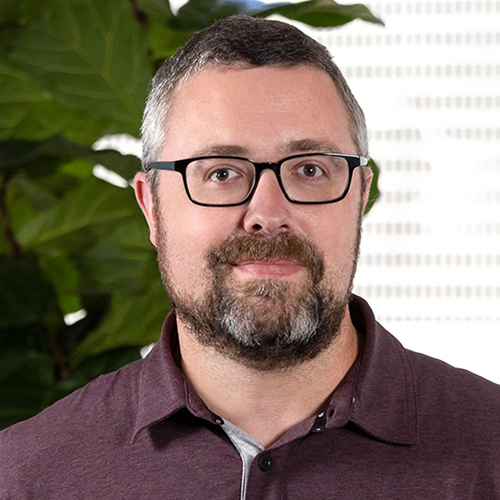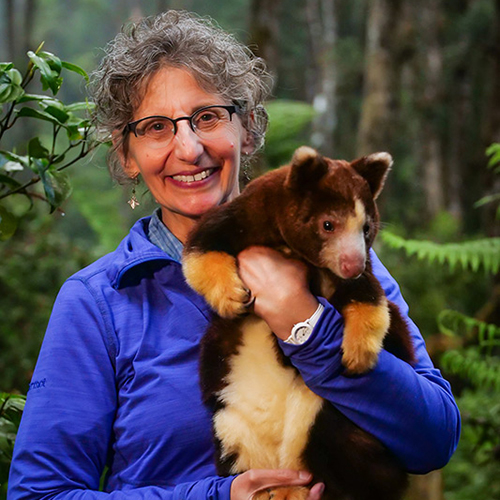Sean Porter (BA, General Studies, 2004), a cinematographer, recently photographed the indie drama Eden, directed by Megan Griffiths, which won the Audience Award at SXSW. He also worked with veteran filmmaker Stephen Gyllenhaal on Grassroots, starring Jason Biggs and Lauren Ambrose, released by Samuel Goldwyn Films. His latest film, It Felt Like Love, directed by Eliza Hittman, premiered at Sundance 2013.
When did you first become interested in film?

My interest in film goes back as long as I can remember. I grew up with two brothers and a sister in Gig Harbor, a quiet town outside of Tacoma. Figuring out ways to stay entertained was no small feat. Once we got ahold of my parent's VHS camcorder (and later a Video8 camera we got for Christmas), we started making our own films all the time. Everything from stop-motion clay animation to period war films happened in our backyard. We were experimenting with forced perspective and green-screen well before I was exposed to any formal education. We directed, produced, designed, photographed, edited, and distributed (to our living room, anyway) all out of necessity—we didn't have anyone else to do it! So there wasn't much difference between the jobs at the time.
Around the middle of my freshmen year of high school we moved to Bellevue and suddenly I was exposed to all these Voc Ed programs, and I thought "I can do this for a living?!" That's when I think I started paying more attention to the technical side of making images. Debbie Nixon and Brad Conger ran the video and broadcast program at Bellevue High School back then, and I owe a lot to the two of them and my time there. I was still directing then; it really wasn't until my time at the UW, working with other budding filmmakers, that I realized I was supposed to be a cameraman.
You created your own major at the UW. How did that come about?
I guess I'm never satisfied doing things the standard way. When I started to think about life after high school I knew I wanted to go to a film school, but after surveying my options nothing sounded appealing. I applied to some film schools in L.A. but ultimately as an undergrad it was going to cost a lot of money for a liberal arts education that was largely comparable to the one I could get at home with the UW. Schools like AFI are built for their graduate students and that was a few years away. So I thought I'd start at the UW and see what happened. At the time there were only a handful of film-related classes, all through the Comparative Literature Department. I took all of them. Then I started looking around for anything that could be related to film: a physics course on the science of light and color, an engineering class on visualization and CAD, 3D animation, and of course comparative literature.
Around my second year, I found out about DXARTS. While not a traditional "film program," it was definitely the next best thing. I spent two years in DXARTS producing, directing and shooting my own work, as well as shooting several other students' projects. I think it was during that period I realized I really wanted to be a cinematographer. It was a special time; several of us were there in this experimental-art-school-style program when we all really wanted to be narrative filmmakers. So we were fighting back a little, trying to figure our relationship to the medium, and what we wanted out of it. Looking back, I wouldn't trade it for a typical film school education. The last quarter I directed and produced a feature-length documentary, took that and everything I had done prior and applied for my own major: Media Production & Design.
You’ve done features, short films, and commercials. Does the format influence your choices as a cinematographer?
It's a loaded question. They all heavily influence my work in different ways. Each one has the same basic premise: tell a story with images. But they each do it in a completely different way. Commercials are selling a product, and using a story (sometimes) and images to sell it. There's usually very little time and typically a disproportionally large amount of resources, crew, and control. So there's a lot of pressure, but you are also typically going to try a different, more overstated look, so in a way it's a good place to try out more affected ways of imagemaking—with specialty lenses or lighting styles, camera movement, etc. On documentaries, it's sort of the opposite: very few resources, small crew, and no control. You have to learn to light with what is immediately available to you, with very little help, but you still have to fulfill that basic requirement: tell the story—even if it's unfolding in front of you as you roll the camera! Features are in the middle, but they require both skill sets. Sometimes on a feature film I may have all the resources of a commercial, but ultimately I only need the tools of a documentary (i.e., the natural sun streaming through a window) to tell the story most effectively. It's important to know how and when to make that choice. In general, I have a harder time with commercials and music videos because I am wholly character and story-centric. If I don't have an emotional, story-based anchor to hold onto, it's hard to know how to light or compose a scene.
What has been a particularly memorable project for you?
Every project has been memorable and affecting. Every project teaches you something. I treasure all of them, even the unsuccessful ones. One of my favorite moments was while I was working on my first "real" set, just after graduating from the UW. I was in the Art Department, nowhere near a camera. I was working with a great team and we were building all kinds of crazy set pieces for Guy Maddin's Brand Upon the Brain. I was loading a bunch of lumber out of Home Depot and driving it all back to set and feeling so ecstatic. I was working on a real MOVIE! You can't loose track of that "Inner-PA" (Production Assistant)—that part of you that is so excited to be working on a film, in any capacity.
Has your liberal arts education enriched your work in unexpected ways?

Even though I fought to create the most focused education I could at the UW, the diversity of its programs has played a big role in my development as a cinematographer. For example, understanding CAD lets me communicate ideas with camera manufacturers in a meaningful way. Certainly my time with economics, physics, psychology, music, logic, literature, and philosophy have all played a big role in my understanding of the medium. I even took a linguistics course that proved to be very applicable while working on a music video where we had to have the talent "sing" backwards in order to accomplish a particular effect.
Are there aspects of cinematography that you wish audiences understood better or appreciated more?
I think there is a growing appreciation for cinematographers, more so than in the past. It's more common now that a moviegoer might know who Rodger Deakins is! It's a lot of management, which isn't necessarily obvious. More than rolling a camera, cinematographers are managing several teams of people, budgets, equipment, and schedules, as well as handling the creative ramifications of lighting and photographing a feature film, supporting the story, and keeping the tone and look consistent, sometimes across multiple states, countries, or continents.
Any advice for UW students and alumni interested in pursuing a career in the film industry?
Get on a working set, in any capacity. Watch and learn and ask questions, but don't get in the way. Work hard and eventually make yourself indispensible.
What are some of your all-time favorite films, which have inspired you as a cinematographer?
Always such a hard question! I love the work of Lynn Ramsey (Ratcatcher, Morvern Callar) for her intimacy, I love the Coen Brothers (No Country for Old Men) for their total control of the medium and their great characters. I love a lot of PT Anderson's work (Magnolia, Boogie Nights) for his use of camera and editing... I could go on for a long time.
More Stories

Working Toward Responsible AI
Artificial intelligence (AI) is an essential tool at Indeed, a global job-matching and hiring platform. Trey Causey (2009) works to ensure that the company's AI promotes equity and fairness.

Mentorship for Black Professionals, Earbuds Not Included
Identity Unboxed, a podcast created by alums Tiana Cole and Brad Blackburn III, explores the experiences of Black professionals in the Seattle area.

Protecting Ghosts of the Forest
Lisa Dabek (PhD, Psychology, 1994), senior conservation scientist at the Woodland Park Zoo, studies and protects tree kangaroos in the cloud forests of Papua New Guinea.